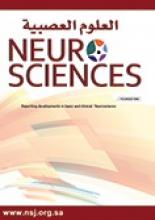Research ArticleOriginal Article
Open Access
Effects of botulinum toxin serotype A on sleep problems in children with cerebral palsy and on mothers’ sleep quality and depression
Vildan Binay Safer, Sibel Ozbudak Demir, Esma Ozkan and Fulya Demircioglu Guneri
Neurosciences Journal October 2016, 21 (4) 331-337; DOI: https://doi.org/10.17712/nsj.2016.4.20160207
Vildan Binay Safer
From Ankara Physical Medicine Rehabilitation Training and Research Hospital, Ankara, Turkey
MDSibel Ozbudak Demir
From Ankara Physical Medicine Rehabilitation Training and Research Hospital, Ankara, Turkey
MDEsma Ozkan
From Ankara Physical Medicine Rehabilitation Training and Research Hospital, Ankara, Turkey
MDFulya Demircioglu Guneri
From Ankara Physical Medicine Rehabilitation Training and Research Hospital, Ankara, Turkey
MD
References
- ↵
- Winter S,
- Autry A,
- Boyle C,
- Yeargin-Allsopp M
- ↵
- Raina P,
- O’Donnell M,
- Rosenbaum P,
- Brehaut J,
- Walter SD,
- Russell D,
- et al.
- ↵
- Newman CJ,
- O’Regan M,
- Hensey O
- ↵
- Wayte S,
- McCaughey E,
- Holley S,
- Annaz D,
- Hill CM
- ↵
- Hemmingsson H,
- Stenhammar AM,
- Paulsson K
- ↵
- Sanger TD,
- Delgado MR,
- Gaebler-Spira D,
- Hallett M,
- Mink JW,
- Task Force on Childhood Motor Disorders
- ↵
- Ryll U,
- Bastiaenen C,
- De Bie R,
- Staal B
- ↵
- de PaivaA,
- Meunier FA,
- Molgo´ J,
- Aoki KR,
- Dolly JO
- ↵
- Koog YH,
- Min B-I
- Fehlings D,
- Novak I,
- Berweck S,
- Hoare B,
- Stott NS,
- Russo RN,
- Cerebral Palsy Institute
- Love SC,
- Novak I,
- Kentish M,
- Desloovere K,
- Heinen F,
- Molenaers G,
- et al.
- ↵
- Lundy CT,
- Doherty GM,
- Fairhurst CB
- ↵
- Fiş NP,
- Arman A,
- Ay P,
- Topuzoğlu A,
- Güler AS,
- İmren SG,
- et al.
- ↵
- Agargun MY,
- Kara H,
- Anlar O
- ↵
- Kapci EG,
- Uslu R,
- Turkcapar H,
- Karaoglan A
- ↵
- Reddihough DS,
- King JA,
- Coleman GJ,
- Fosang A,
- McCoy AT,
- Thomason P,
- et al.
- ↵
- Romeo DM,
- Brogna C,
- Musto E,
- Baranello G,
- Pagliano E,
- Casalino T,
- et al.
- ↵
- Newman CJ,
- O’Regan M,
- Hensey O
- ↵
- Hartley SL,
- Barker ET,
- Seltzer MM,
- Greenberg JS,
- Floyd FJ
- ↵
- Witt WP,
- Riley AW,
- Coiro MJ
- ↵
- Joesch JM,
- Smith KR
In this issue
Effects of botulinum toxin serotype A on sleep problems in children with cerebral palsy and on mothers’ sleep quality and depression
Vildan Binay Safer, Sibel Ozbudak Demir, Esma Ozkan, Fulya Demircioglu Guneri
Neurosciences Journal Oct 2016, 21 (4) 331-337; DOI: 10.17712/nsj.2016.4.20160207
Jump to section
Related Articles
- No related articles found.
Cited By...
- No citing articles found.





